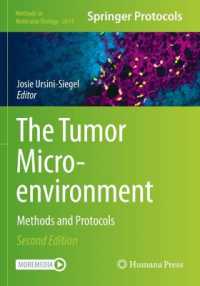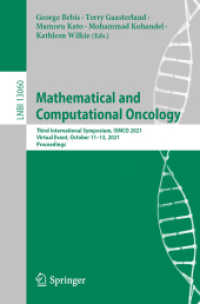基本説明
Beginning with the principles of thermodynamics and the organization of the cell, the text discusses each of the transport mechanisms found in the organism, their structure at the molecular level, their function and features, and their integration into tissues and organs.
Full Description
Focus, Organization, and Content This book, like the first edition, deals with the mass transport processes that take place in living systems, with a focus on the normal behavior of eukaryotic cells and the - ganisms they constitute, in their normal physiological environment. As a consequence of this focus, the structure and content of the book differ from those of traditional transport texts. We do not start with the engineering principles of mass transport (which are well presented elsewhere) and then seek biological applications of these principles; rather, we begin with the biological processes themselves, and then - velop the models and analytical tools that are needed to describe them. This approach has several consequences. First of all, it drives the content of the text in a direction distinctively different from conventional transport texts. This is - cause the tools and models needed to describe complex biological processes are often different from those employed to describe more well-characterized inanimate systems. Many biological processes must still be described phenomenologically, using me- odologies like nonequilibrium thermodynamics. Simple electrical analogs employing a paucity of parameters can be more useful for characterization and prediction than complex theories based on the behavior of more well-defined systems on a laboratory bench. By allowing the biology to drive the choice of analysis tools and models, the latter are consistently presented in the context of real biological systems, and analysis and biology are interwoven throughout.
Contents
Equilibrium Thermodynamics.- Free Diffusion.- The Cell.- Facilitated Diffusion: Channels and Carriers.- Active Transport.- Nonequilibrium Thermodynamics.- Models of Transport Across Cell Membranes.- Regulation and Feedback.- Excitable Cells.- Epithelial Transport.- Gas Transport.







